Google Pixel 4 XL vs Samsung Galaxy Note 10+
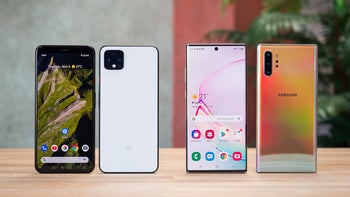
The Samsung Galaxy Note 10+ and the Google Pixel 4 XL are the two big phone front-runners that are battling it out for the title of the best Android phone of the year, and to settle it down we take a detailed look at the pros and cons of each of them.
The Galaxy Note 10+ bets on having more added features in Samsung's custom One UI interface, plus it has got the S Pen, while the Pixel 4 XL is a dream phone for those who want a pure Google experience as it runs exactly that and at a buttery-smooth 90-hertz refresh rate at that, plus it adds a powerful camera that can outperform any phone when light gets scarce.
We have already spent a couple of months with the Note and around a month with the Pixel, and we feel we know these phones in great detail now, so let's put them side by side, look at the differences and see which one will be a better fit for your needs.
Design, Screen and Size
The quirky Pixel has more of a personality, while the Note looks gorgeous like a museum piece
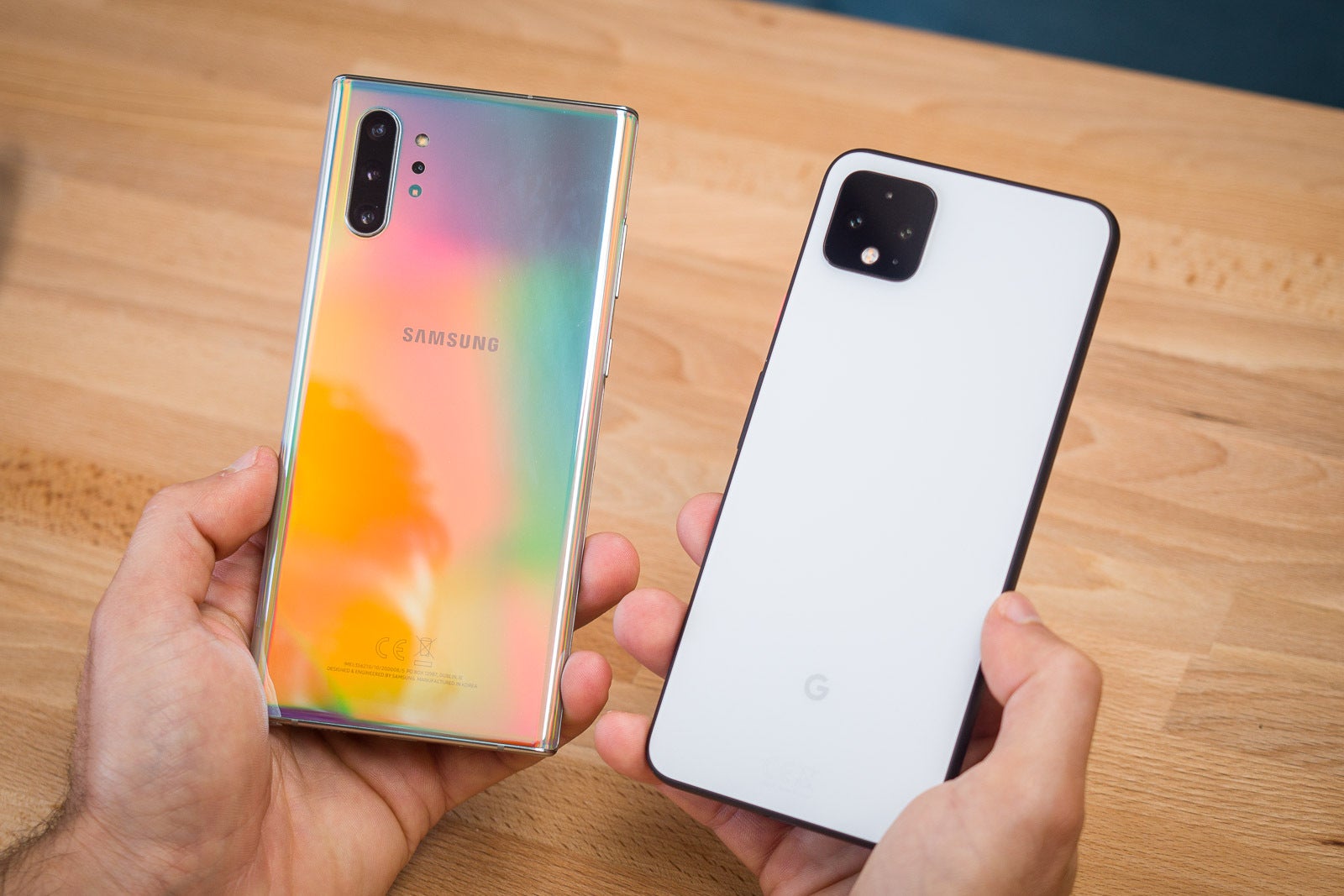
Both the Galaxy Note 10+ and the Pixel 4 XL are beautiful in their own very different way. The Note feels like a triumph of industrial design with an almost alien-like glass back that reflects light in all sorts of gorgeous patterns, and the phone is itself amazingly thin and lightweight for such a big phone. The Pixel, on the other hand, has a design that is a bit more playful with contrasting colors for the back and the sides, and that colorful power button. Make no mistake, it's every bit as refined, but it also looks more approachable, more quirky and fun. The Pixel is also heavier, a hair thicker and slightly bigger, but honestly, those differences are so tiny it's almost impossible to notice them unless you start measuring the phones.
One word of caution here: both phones lack a 3.5mm headphone jack, a trend these days, but nonetheless worth mentioning as this is the first Samsung flagship without a headphone jack.
One weird thing about the Note is that all physical keys are on the left side. It's not a big deal and you get used to it, but for a right-handed person it feels strange nonetheless and we do prefer the position of the buttons on the Pixel.
Both phones use gorgeous AMOLED screens with rich colors that look stunning. You have a bit more screen real estate on the Note: it features a 6.8" display, while the Pixel sports a 6.3" screen, but the resolution on both is the same crispy 1440 x 3040 pixels (Quad HD+). On the Note, however, the screen defaults to a slightly lower 1080p-ish resolution to help with battery life, but you can go into Settings, then Display, and switch to the crispier Quad HD+ resolution. It's worth also saying that both these phones are very well calibrated. They ship with default settings that give you boosted colors for a bit more punch, but you can dial down the colors to a more natural, more toned-down sRGB look in settings, and they will still look great. It's hard to pick a winner in this regard.
Biometrics
The Pixel face recognition is infinitely better, but not very secure
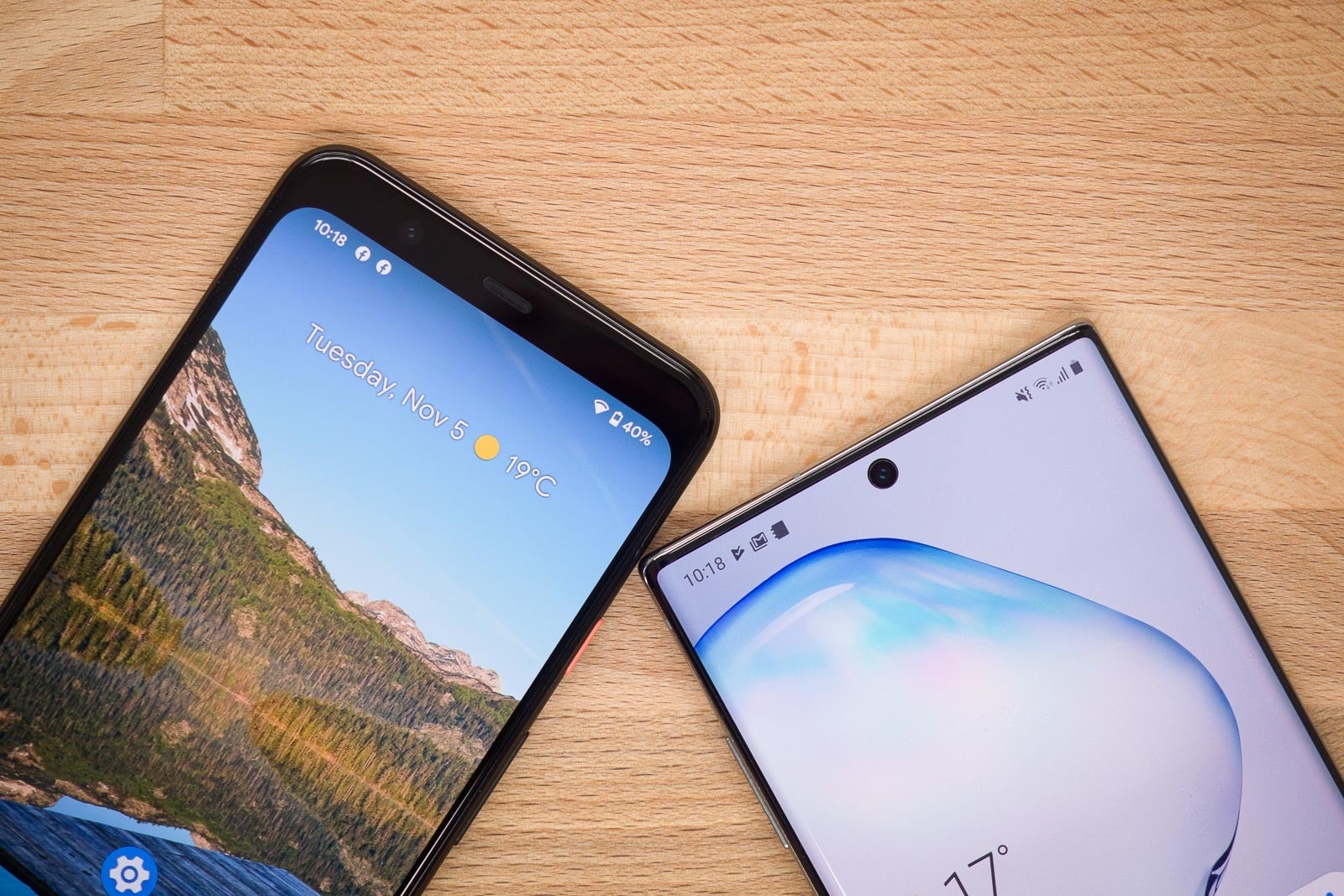
One of our main gripes about 2019 Samsung flagships is the quite slow and frustrating ultrasonic fingerprint scanner. We saw this piece of technology premiere on the Galaxy S10 series and it's the same one on the Note 10+: a fingerprint scanner embedded under the screen and one that almost never seems to work from the first try.
The Pixel, on the other hand, adopts a biometrics technology that Apple introduced a couple of years ago with the iPhone X: 3D face recognition. Coupled with the radar sensors that detect the precise moment when you raise your phone towards your face to look at it, the face recognition tech is an example for quickness and accuracy. And we love it! The only thing about it is that it is not quite secure just yet. The vulnerability here lies in the fact that the phone will unlock even when you have your eyelids closed, meaning some theoretical bad actor could just point your phone at your face while you take a nap and still unlock it. Google has promised an update that will allow intentional looking for the unlock, but that update is not here yet at the end of 2019.
Interface
Vanilla Android vs Samsung's One UI

The other fundamental difference between the Galaxy and the Pixel is the interface. Samsung has a feature-packed One UI that is more accessible than ever while still retaining a good amount of tweaks and option that are missing on the Pixel. The recent Android 10 update has brought things like a screen video recorder that is missing on the Pixel, and the list of exclusive Galaxy features is long, from the S Pen, to the Edge Screen, the more advanced Always-on Display, the Secure Folder, and so on.
The Pixel, on the other hand, does one thing that Samsung cannot quite nail even after all those years of making smartphones: perform truly smoothly, without hiccups. Even a brand new Note seems like a stuttery phone when compared to the 90-hertz of smoothness on the Pixel. The Google phone has better looking transitions and it's just better optimized for performance.
Camera
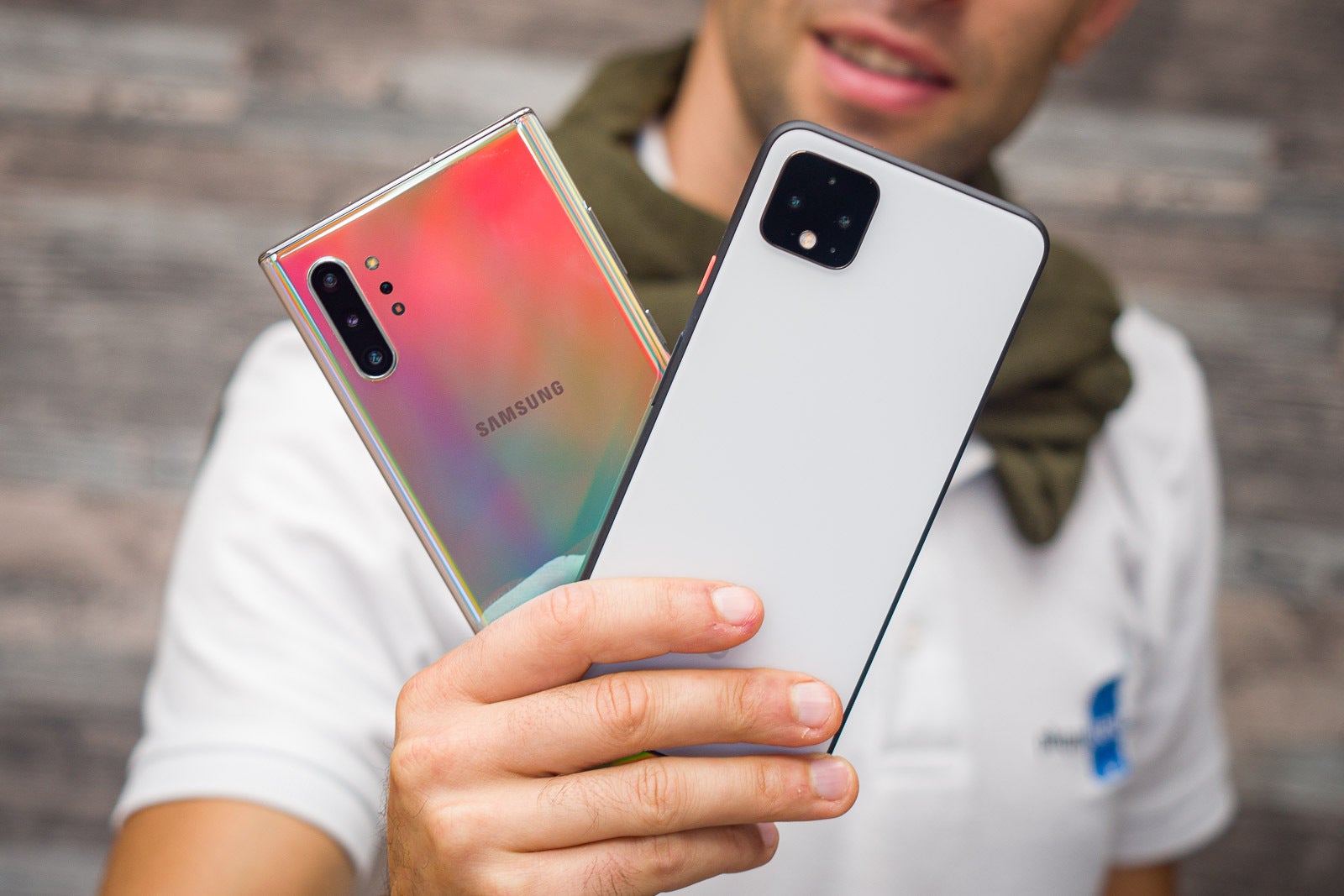
In the last few years, the Pixel series has emerged as the leading smartphone camera in the world, but the Galaxy Note 10+ has something that the Pixel lacks: versatility. With three main cameras plus a depth sensor, the Galaxy has got the advantage of an ultra-wide lens that the Pixel lacks and that's something that we do consider to be a considerable flaw.
Apart from that, both the Galaxy and the Pixel rely on a 12-megapixel main sensor, plus you have a roughly 2X telephoto zoom lens on both phones that comes in handy for portrait shots and for cleaner zooms.
Here are the full camera specs:
Galaxy Note 10+:
Main camera: 12 MP sensor with 27mm lens, f/1.5-2.4 dual aperture, 1/2.55" sensor size, OIS
Secondary camera: 12 MP telephoto with 52mm lens, f/2.1 aperture, OIS
Third camera: 16 MP ultra-wide with 12mm lens, f/2.2 aperture, Super Steady video
TOF depth camera
Secondary camera: 12 MP telephoto with 52mm lens, f/2.1 aperture, OIS
Third camera: 16 MP ultra-wide with 12mm lens, f/2.2 aperture, Super Steady video
TOF depth camera
Pixel 4 XL:
Main camera: 12.2 MP sensor with 27mm lens, f/1.7 aperture, OIS
Secondary camera: 16 MP telephoto with 50mm lens, f/2.4 aperture, OIS
Secondary camera: 16 MP telephoto with 50mm lens, f/2.4 aperture, OIS
Image Quality
When it comes to image quality, these two are among the very best you can get on a smartphone, but there are some differences that you should know about.
Images from the Pixel are noticeably sharper and they have a slightly wider dynamic range, plus images shot at night look amazingly well and are easy to capture with an intuitive and fast Night Sight mode. Photos from the Galaxy tend to have more pleasing colors during the day and they are also a bit on the softer side, while in extreme low light the Galaxy captures slightly blurry images that don't look bad, but are not quite top-notch either.
Galaxy triple-camera performance:
Pixel vs Galaxy main camera comparison:
Some differences can be spotted right away, mostly with color reproduction as the photo from the Galaxy has colder and we would say a bit more realistic colors, while the Pixel has a slight warm tint to the whole image. Out of these two, we would pick the Galaxy photo with its brighter exposure and more cheerful colors.
Here are a couple more shots:
There are some differences in the color reproduction, but picking one of these two is largely a matter of personal preference.
Right about sunset time, the colors from the Galaxy are richer, and even if it doesn't have quite as much detail as the Pixel, it's the better looking photo.
In this night shot, we see that the light from the lamp actually looks better on the Galaxy (we did not use the night modes on either phone in this case). If you stare from up close, you will notice that the Pixel, however, has the cleaner image with less noise and more detail. This one is a toss up.
The sea at night looks beautiful, but different: the Pixel captures the cleaner photo here and you will also notice a strange but common photo artifact on the Galaxy, notice the bottom part of the image with the bleed of green light which just looks weird.
In this group selfie with a few PhoneArena folks you can see that even though the Pixel captures the sky that is completely overblown on the Galaxy, the skin tones are much more pleasing on the Samsung photo and it's the more memorable one, while on the Pixel everything kind of blends into one blue-ish color.
Loudspeakers and Audio
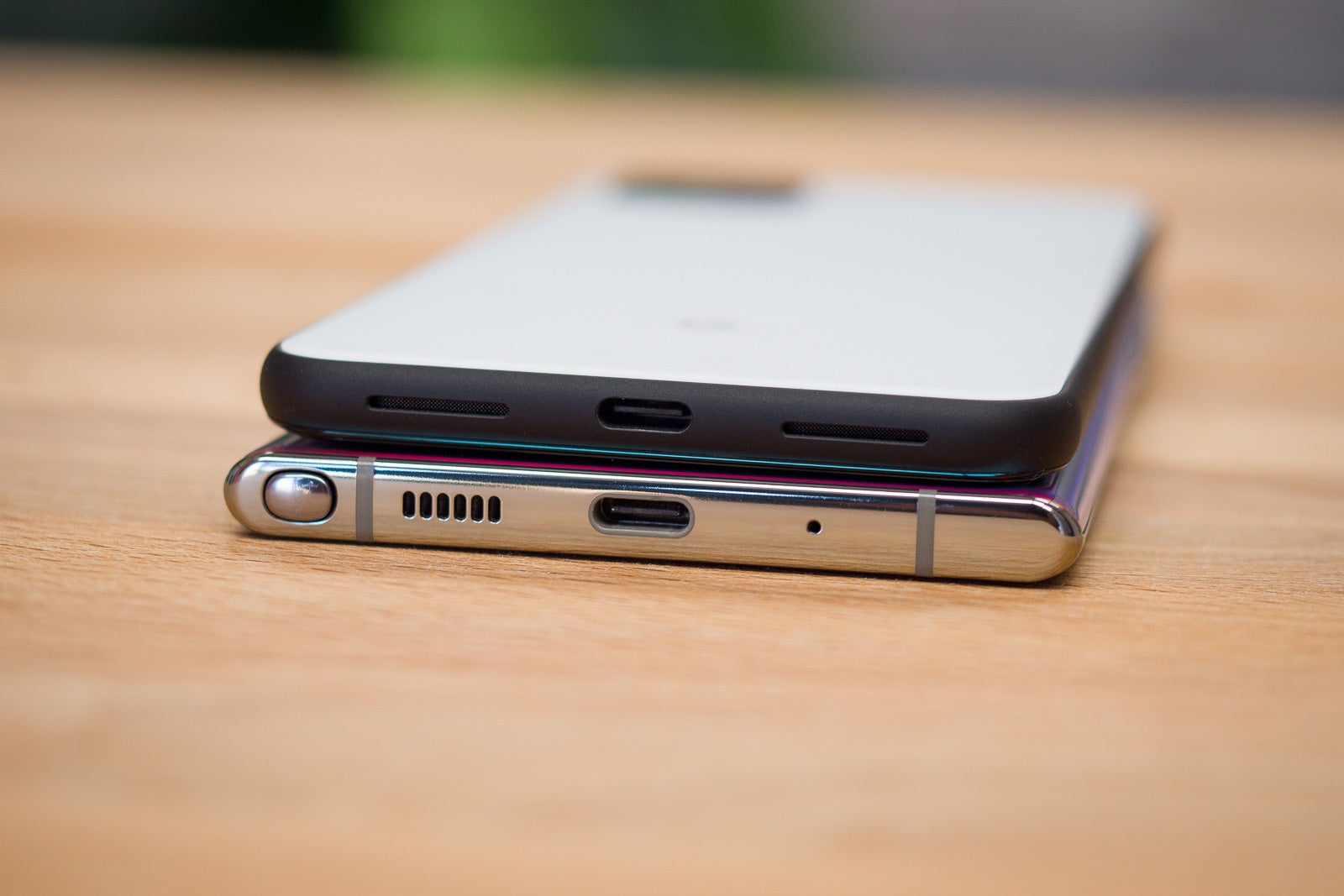
In a recent blind test at the office, we had a bunch of people listen to all major late 2019 flagships and we were shocked to see the results of this test: the Pixel loudspeakers blew the competition out of the water. Each and every one of the participants placed the Pixel loudspeakers way ahead of other tested phones, so if you want the very best loudspeaker on your phone, the Pixel should easily be your top choice.
The Galaxy loudspeakers also get quite boomy for a smartphone, but they lack the depth and definition you get on the Pixel.
And once again, let us mention that wireless or USB-C audio is the only way to go here, there is no 3.5mm headphone jack and you would need a dongle for that.
Battery Life
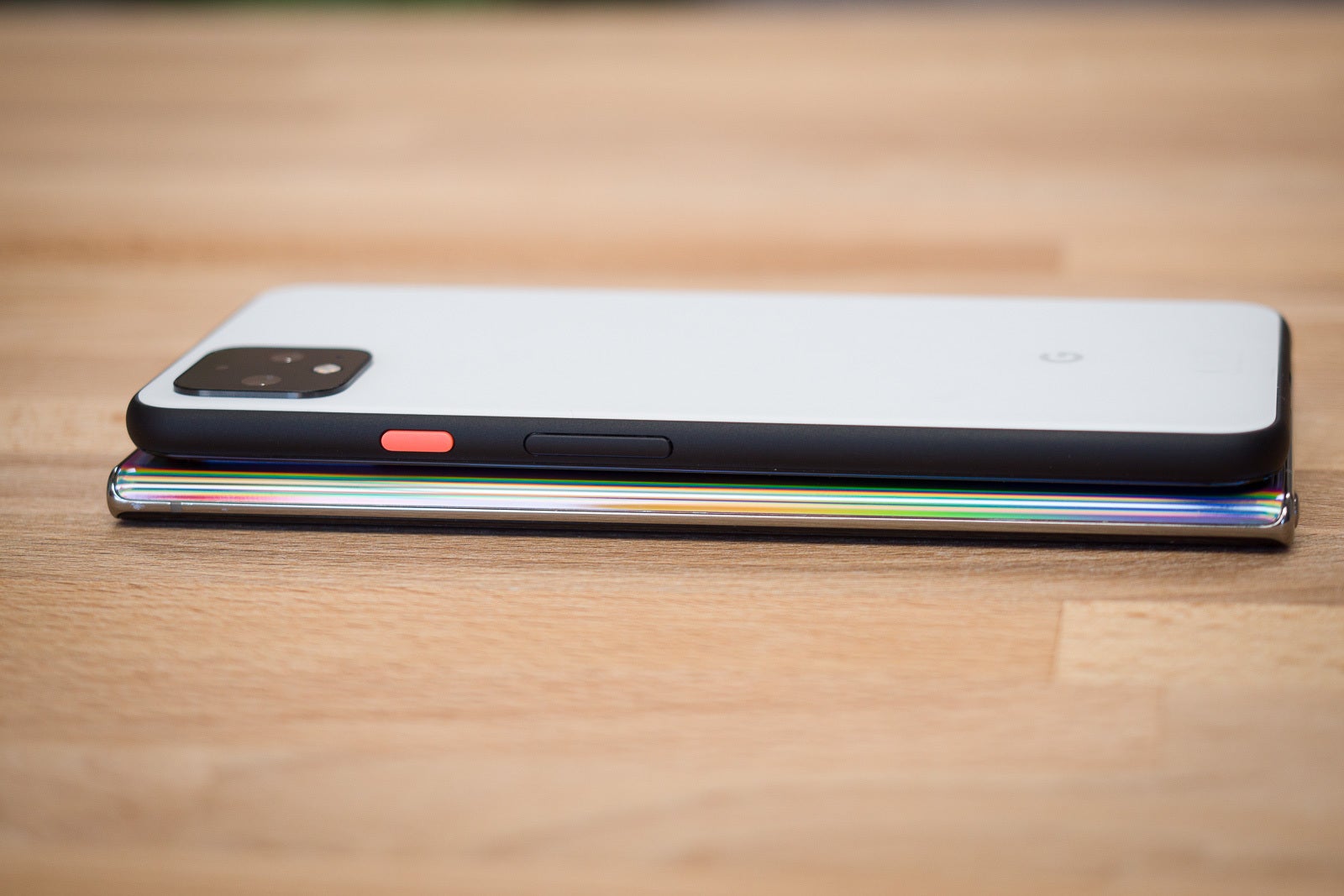
Testing the battery life of phones is a notoriously difficult task, but we have spend long days running tests on both these phones, and while in most tasks the results come up just as you'd suspect, with the larger battery of the Note 10+ beating the Pixel 4 XL, in one particular area, the Pixel performed great:
Galaxy Note 10+ (4300mAh) // Pixel 4 XL (3700mAh)
- Web Browsing: 11 hours 37 minutes // 9 hours 32 minutes
- YouTube Video Playback: 8 hours 2 minutes // 7 hours 17 minutes
- 3D Gaming: 5 hours 5 minutes // 8 hours 20 minutes
So, if you play a lot of games like Fortnite and Minecraft, the Pixel is an excellent choice as it's able to handle the loads better and last quite a bit longer than the Note. For everyday use, the Note has an advantage in battery life.
Both phones also support fast charging AND wireless charging.
The Galaxy is the faster one here as it charges up in just a bit over an hour using the 25-watt charger provided for free in the box, while the Pixel takes nearly two hours to fully charge up.
Prices & Conclusion
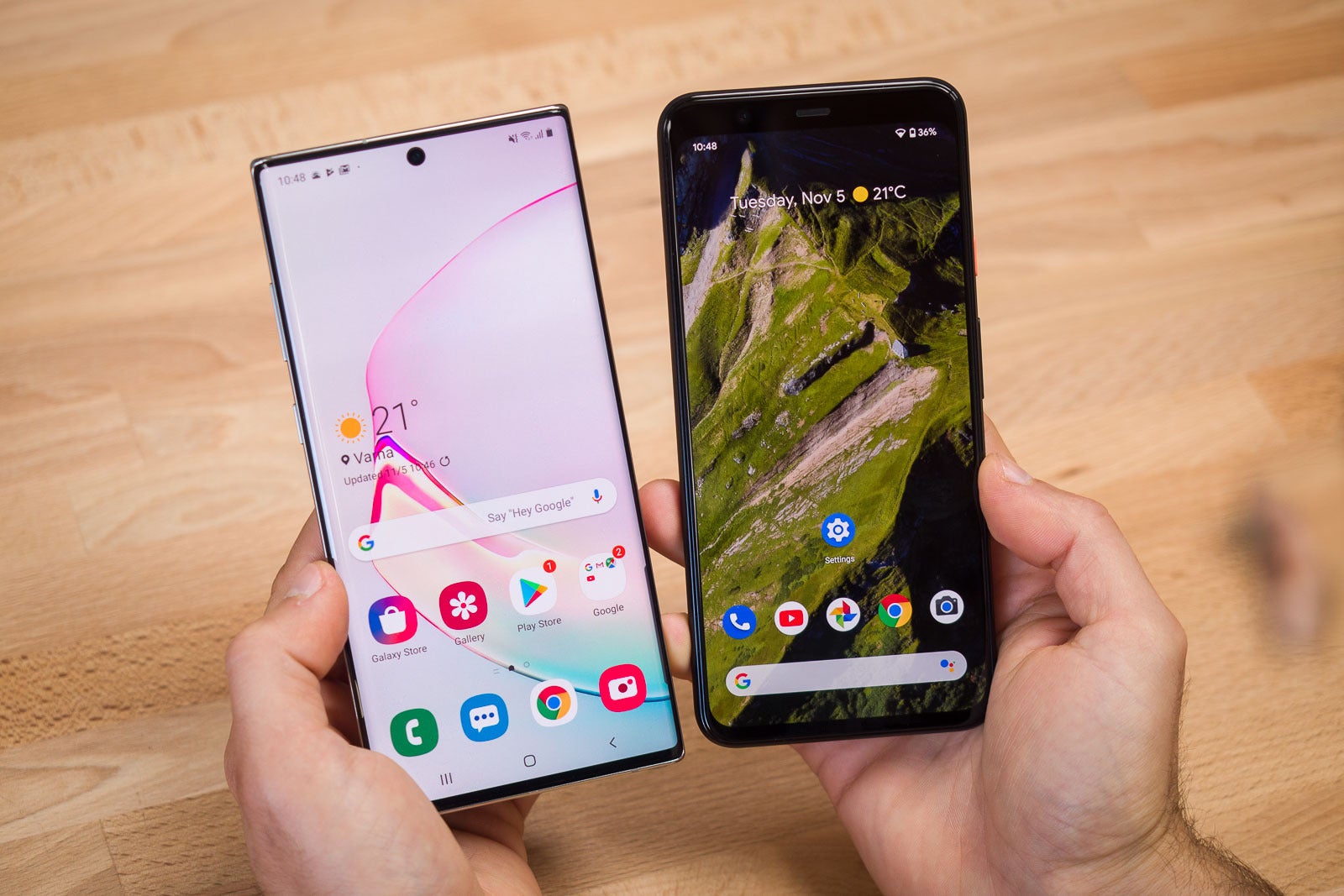
The Pixel was the most harshly criticized phone of 2019, but with the recent drastic price cuts, the truth is that it's an amazing value for the money. At the time of this writing, practically all throughout December, the price of the Pixel has stayed $150 below the starting price. While prices change, the Pixel right now can be purchased at a lower starting price than the Galaxy (but the Galaxy has more storage):
- Pixel 4 XL 64GB/128GB: $750/$850
- Galaxy Note 10+ 256GB: $850
So which of these two should you get?
Here is our take: the Pixel 4 XL is the phone that feels faster. The 90-hertz display is a great feature and it makes the phone faster in a way that you notice, while the Note while not slow, feels a bit stuttery in comparison and not quite as refined. In a blind test that we conducted, we also found that the loudspeakers on the Pixel convincingly won everyone's hearts and were consistently mentioned as the best ones ever put on a smaratphone. As for the camera, it's great at night, but we find that it lacks a bit in versatility compared to the Galaxy.
The Galaxy, on its part, has that larger screen area with its wider frame and with the endless features of One UI like the Pop-up view for YouTube, for instance, it feels more productive. It also has features like a screen recorder (Android 10 feature) that the Pixel lacks. Let's not forget the S Pen, too, an important tool for many people.
It's really hard to pick a winner, but if you want pure speed and clean Android, the Pixel is the way to go, and if you prefer to have more features and extras, then, you'd be better off with the Galaxy.

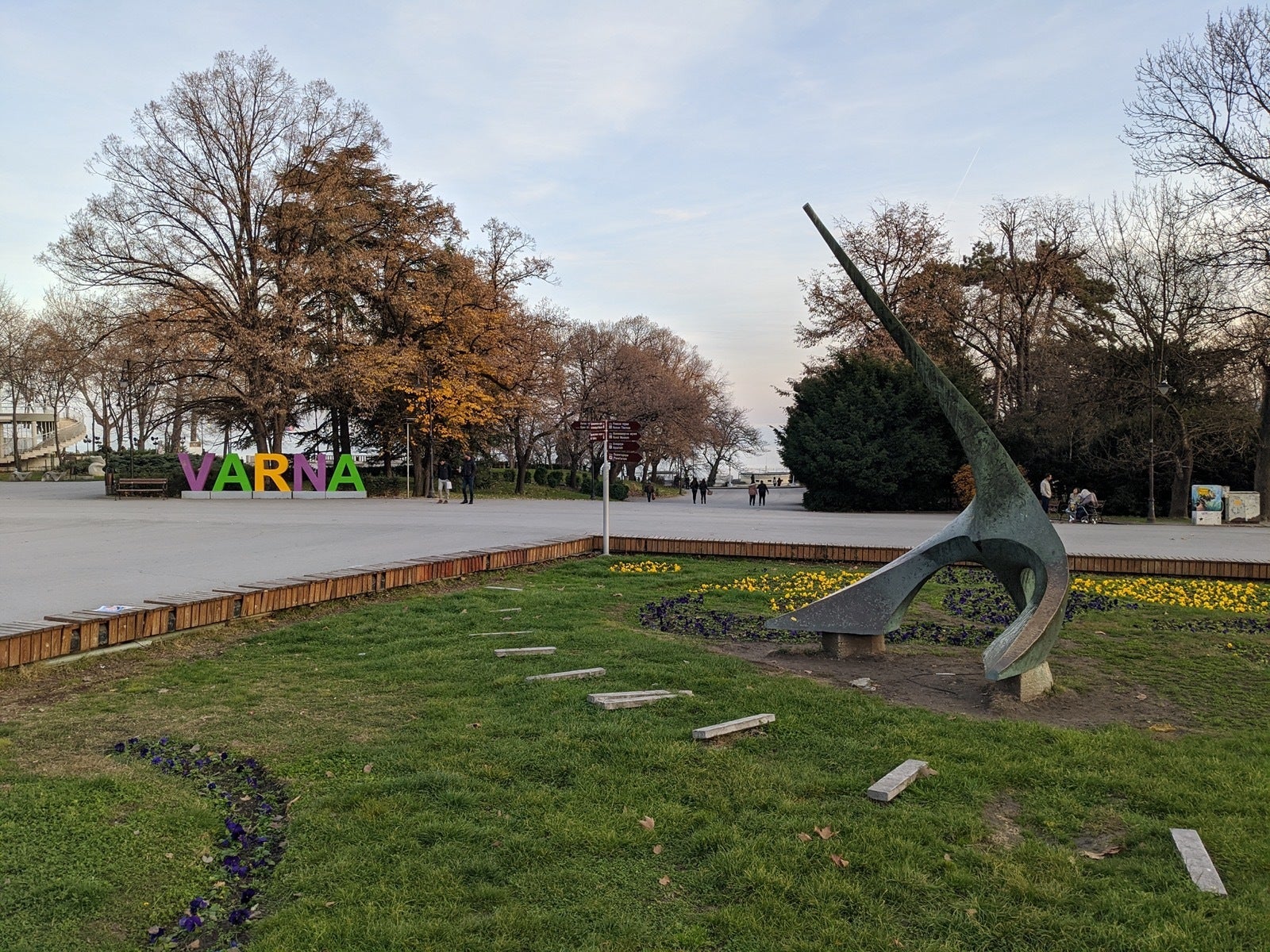



























Things that are NOT allowed: